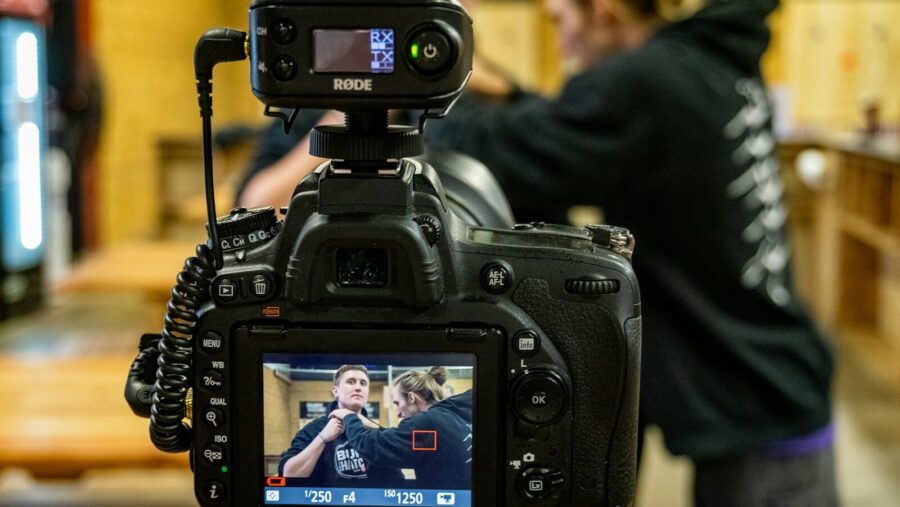In an age increasingly being defined by the creative potential of AI, there is a countervailing force that’s holding its own in the realm of audiovisual media: authenticity.
Borrowing from the realm of B2C, and reflecting on the emotional journeys that brands have created in this space, B2B businesses have the opportunity to engage audiences in increasingly creative and more meaningful ways.
Looking back on the year at some of the most impactful campaigns across B2B and B2C marketing, authenticity has been a common theme. From an execution and storytelling perspective, the Norwich City Samaritans campaign that went viral last October struck a powerful chord with audiences across platforms. Although the subject of mental health is more broadly resonant, the power of the story enabled the campaign to connect on a deeper level. The most important lesson from a creative standpoint is that we shouldn’t always focus on center stage, that is, the client. In the B2B context, this focus should be on the end customer.
Time to let the customer shine
When we consider the options open to brands in building credibility with advocacy, rather than just awareness, the two most powerful avenues are customers and industry experts such as analysts. Polished videos featuring C-suite executives extolling the virtues of a solution and the ROI achieved still have their place, but video is a medium for showing rather than telling.
Going down the value chain, and letting customers share their success, immediately creates a more authentic connection to the outcomes that partnerships, products, and services can deliver. It’s always a difficult sell, convincing a client that their own content needs less of them and more of their customers, but in the land of B2B, advocacy delivers authenticity. Content that communicates the strength of a solution through its beneficiaries is intrinsically authentic, so investment in customer stories should be a focus for 2024.
The rise of the perennial
With the preponderance of social media platforms and generational cohorts that increasingly tend toward more bite-sized, shareable content, social-ready video assets are another element of audiovisual media that’s gaining influence and will certainly inform creative strategies in 2024. Similarly, longer-form content is also gaining traction with all generational cohorts, which are themselves becoming less significant from a content targeting perspective. Increasingly, those we once referred to as “digital natives” (i.e., those born into the digital age), are no longer the most digitally adept by default. Today, the ability to consume information via traditional media channels as well as curated content across social messaging and media platforms is widespread, giving further credence to the concept of the “perennial”.
As with all video content, a compelling story is crucial. Whether it’s shortform content, such as memes, which can succinctly communicate complex ideas, or longer form content that explores ideas and themes in greater depth, there is a delicate balance in getting it right. When it comes to the buying journey, senior decision-makers will certainly be interested in ROI, but that doesn’t mean they want to be bombarded by stats amid a deluge of corporate speak. At the same time, there are some terrible examples of organizations incorporating memes in their marketing output, for which the target audience is not “in” on the joke or reference. It’s therefore important to push boundaries, but to keep in mind that maintaining brand integrity means knowing the limits.
Getting in step with the up-tempo march of GenAI
Today, generative AI tools can ingest long-form deliverables in textual form and produce market-ready video content with relative ease. They can also break up hero content and create video assets that can be shared more widely, aligning with the platforms and expectations of the audiences and platforms discussed above.
It doesn’t go without saying that brands need to begin preparing for and adapting to the implications of this technology and learn how to harness it effectively. Outside of creating the content itself, there are parts of the creative process that can be expedited with generative AI tools, such as brainstorming, visualization, storyboarding, and pitches. Understanding how and where GenAI can deliver real value will rely on education and a commitment to a mindset that seeks mastery over the technology that has already shown its unsettling potential.
Clients are increasingly interested in how and where generative AI has been used to deliver projects and, in many cases, are exploring the technology themselves—with an eye toward reducing costs and expediting delivery.
Ultimately, doubling down on video doesn’t mean investing twice as much in video content. It’s far more important to understand the dynamics at play that will define customer and market expectations over the year ahead.


 Whether you want to learn how to use LinkedIn, X or Facebook for marketing, or need to brush up on business skills like leadership, presentation skills or managing meetings, you will find something to enhance your professional skills with these on-demand courses.
Whether you want to learn how to use LinkedIn, X or Facebook for marketing, or need to brush up on business skills like leadership, presentation skills or managing meetings, you will find something to enhance your professional skills with these on-demand courses.